Serving as a capital of ancient Japan, the Nara of today is one of this nation’s cultural powerhouses.
Home to Japan’s most significant Buddhist temple, as well as a park with the friendliest deer you’ll ever meet, Nara is a can’t miss destination for travellers passing through Kansai.
Come check out our Nara travel guide to Japan as we cover the best things to do in Nara, Japan.
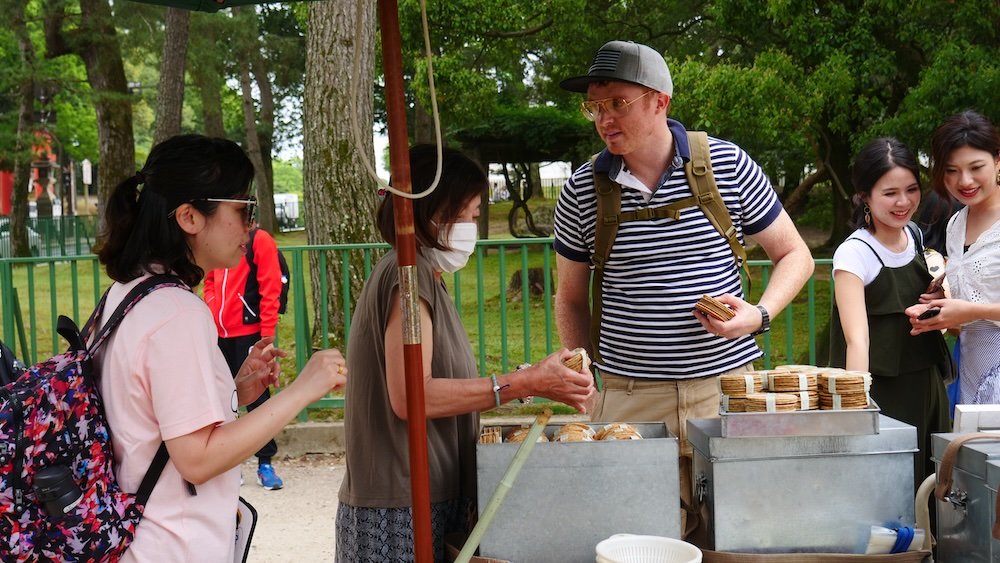
Top Attractions
Start your time in the city of Nara by checking out Todaiji Temple. Built in the 8th century, this Buddhist hall of worship was once head of all lesser Buddhist temples nationwide. The power it wielded was so great that the capital of Japan was moved from Nara to Nagaoka in the late 8th century to reduce the influence of the priests on national policy.
The main hall of this complex (the Daibutsuden) is known for being the world’s largest wooden structure. It is gobsmacking, especially when you consider its current size is 33% smaller than its original footprint. Inside, you’ll find Japan’s largest bronze statue of the Buddha, as it stands 15 metres over its admirers.
With numerous temples, halls, and museums in this complex, expect to spend several hours to an entire day taking in everything this attraction has to offer.
Todaiji Temple is located alongside Nara Park. While it is one of this city’s primary green spaces, it is more than a place to relax. More than 1,000 deer freely roam the grounds, soliciting food from human attendees.
source: Samuel and Audrey YouTube channel: Nomadic Samuel + That Backpacker hosted
More Attractions
Over the years, these animals have become habituated to the presence of people; as such, they are very docile, though they can be somewhat aggressive if you have food on you. Crackers that the deer like are freely sold in this park, allowing you to feed them if you so choose. Some have learned to bow as a form of begging, a funny quirk considering that the kowtow, a bowing motion done as a show of respect, is a common greeting among people in Japan.
Buddhist temples aren’t the only religious landmarks worth seeing in Nara – while you are here, drop by Kasuga Taisha, Nara’s most prominent Shinto shrine. Dedicated to the deity responsible for the protection of the city, it has been around for more than a thousand years.
Kasuga Taisha is best known for having scores of lanterns. Scattered throughout the complex, they are lit on two occasions – early February and in the middle of August. If you are in the area at either of these times, don’t miss either of these festivals.
Japanese Buddhism has given the Nara area plenty of exquisite art over the years. If you want to check it out, be sure to visit the Nara National Museum. Housed in a building that dates from the Meiji Restoration, you’ll find statues, objects used in religious ceremonies, scrolls, paintings and other objects of artistic interest in its many wings.
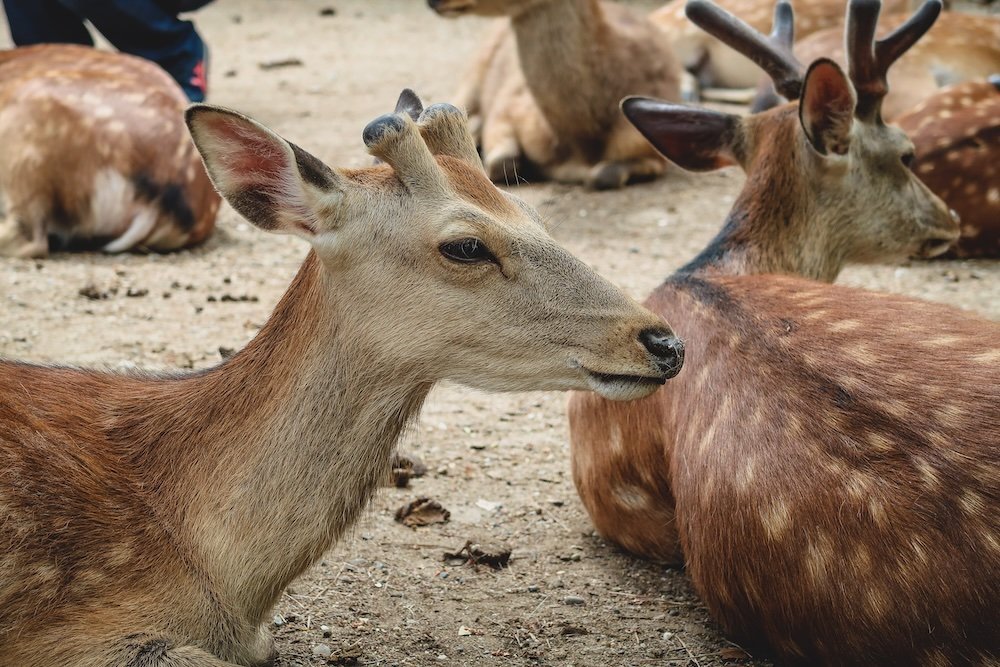
Other Attractions
Looking for other Buddhist temples to check out while you are in Nara? Be sure to include Toshodaiji Temple on your travel itinerary. This temple was built in the mid-8th century for Ganjin, a Chinese Buddhist priest, who had travelled to Japan at the request of Japanese Buddhists.
His task: help the priests in Japan spread and teach Buddhism as effectively as possible. Here, you will find his grave, and his statue is also located on temple grounds. However, it is only revealed once per year around June 6th, the day Ganjin passed away.
Located amidst a lush forest, those visiting this temple will enjoy an atmosphere of serenity that is befitting of this religion.
Those with green thumbs will want to ensure that the Isuien Garden is on their list of places to visit in Nara. With mountains and the Todaiji Temple in the background, the landscape of this traditional Japanese garden will inspire even the most jaded traveller.
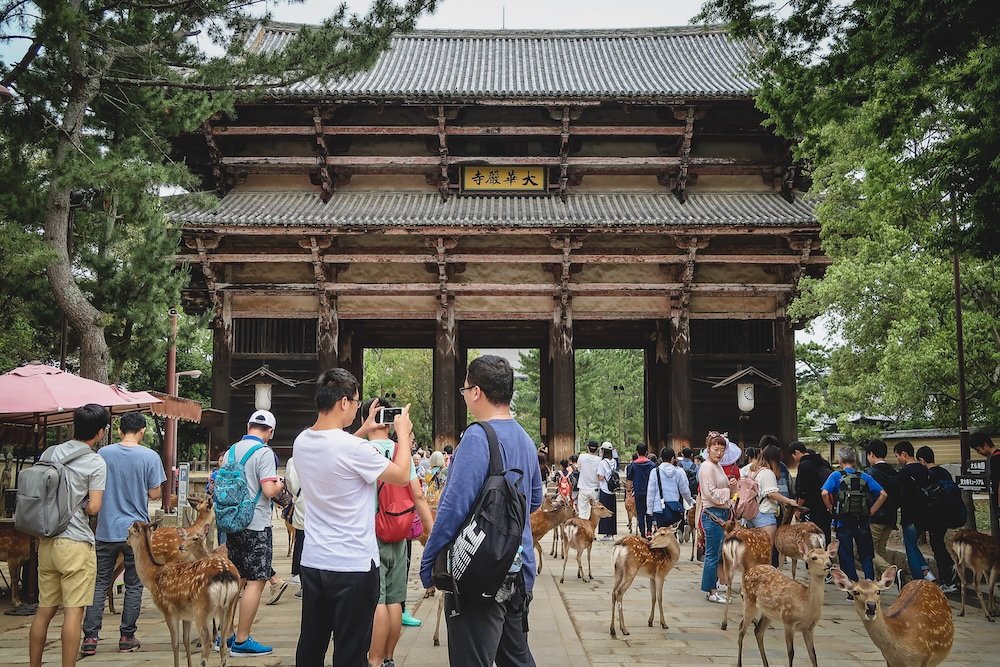
Further Attractions
A composite of two gardens built in the 17th and 19th centuries respectively, this scenic place also comes with a tea house and a museum that shows off pottery and other artifacts imported from China and Korea, making it a spot you’ll linger longer than planned.
Yoshikien Garden is a place that is also worth your time. Originally built for the priestess of Kofukuji Temple, this green space is divided into three separate gardens: one for mosses, one with water features, and another where tea ceremonies are held.
If you are on a budget, be sure not to miss this attraction, as no admission is charged for visiting foreigners.
End off your time in Nara by spending an evening discovering Naramachi. Home to the commercial sector of Nara since the Edo Period, it is known for its narrow entryways. Merchants deliberately had narrow buildings built to limit their tax burden, as authorities charged tax based on the width of doorways.
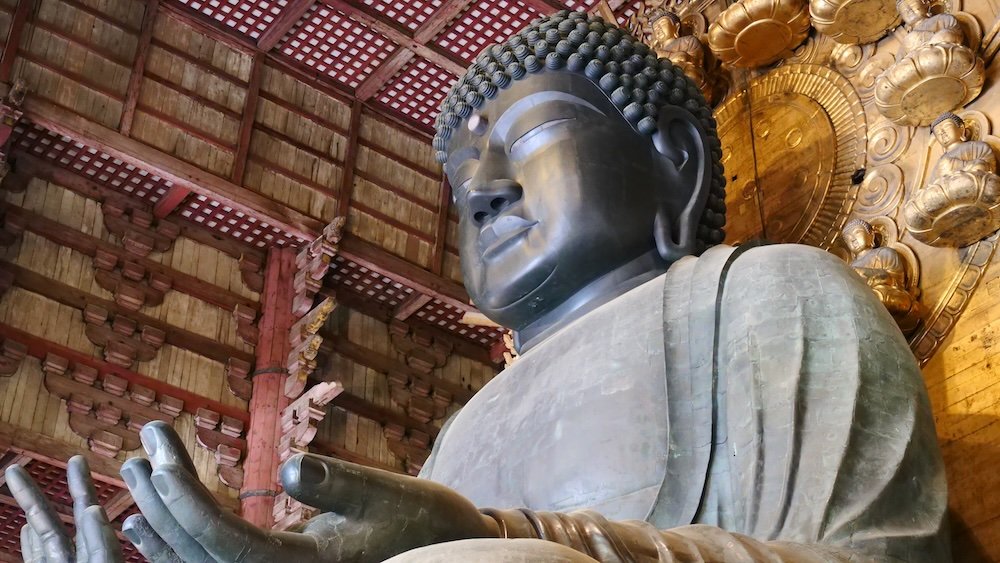
Top 10 Things To Do in Nara, Japan For Visitors
Let’s explore the top 10 things you shouldn’t miss when visiting Nara.

1. Take the Kintetsu Line Train from Nipponbashi, Osaka to Nara
Begin your Nara adventure with a scenic train ride on the Kintetsu Line from Nipponbashi Station in Osaka. For just 560 Yen per person, this journey takes approximately 40 minutes, whisking you away from the urban hustle to the tranquil beauty of Nara. The trains are clean, comfortable, and punctual, offering a stress-free start to your day. As you glide through the countryside, you’ll catch glimpses of traditional Japanese homes and lush landscapes. Arriving at Kintetsu Nara Station places you right in the heart of the city, within walking distance of major attractions like Nara Park and Tōdai-ji Temple.
- Affordable and efficient: Only 560 Yen for a quick, comfortable ride.
- Convenient location: Arrive directly at Kintetsu Nara Station near key sites.
- Frequent departures: Trains run regularly, so you can plan your day flexibly.
Tip: Purchase an IC card like ICOCA or Suica to make hopping on and off public transport seamless throughout your trip.
![]()
2. Feed the Bowing Deer at Nara Park with Shika Senbei
One of Nara’s most iconic experiences is interacting with the friendly deer that roam freely in Nara Park. Considered sacred messengers of the gods, these deer have become a symbol of the city. For around 200 Yen, you can buy Shika Senbei (鹿せんべい), special deer crackers, to feed them. The deer have learned to bow to visitors as a polite request for food, which is both charming and unique. As you offer them crackers, they’ll bow their heads, and you can bow back—it’s an endearing exchange. Just be mindful, as some deer can be quite eager!
- Cultural interaction: Engage with creatures revered in Shinto beliefs.
- Memorable photos: Capture the delightful moments with these gentle animals.
- Scenic surroundings: The park itself is beautiful, with expansive lawns and historic sites.
Tip: Hold the crackers above your head to encourage the deer to bow, and remember to keep any maps or papers tucked away—they might mistake them for snacks!
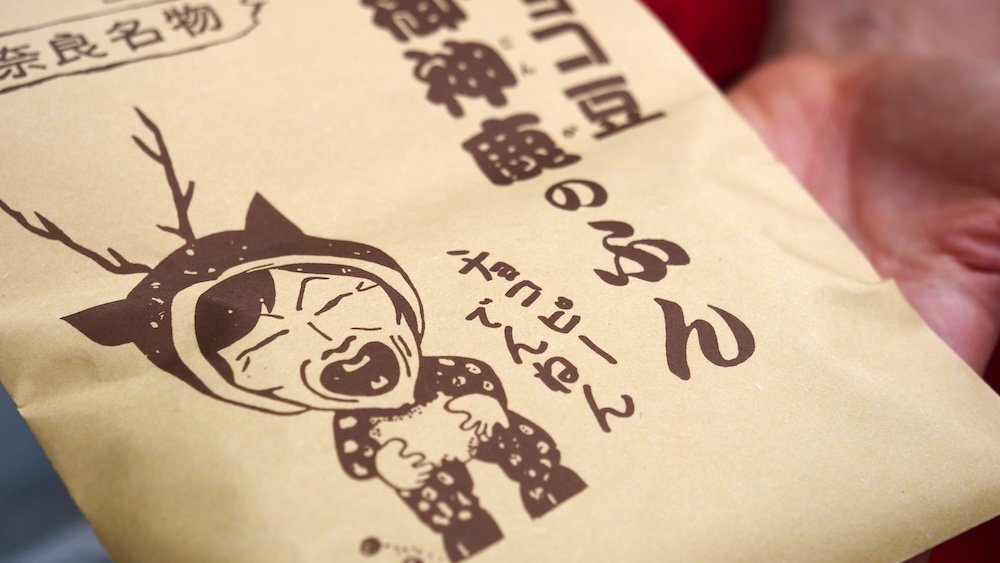
3. Try the Quirky “Deer Poop” Snack (Chocolate-Covered Nuts)
Embrace Nara’s playful side by trying the amusingly named “Deer Poop” snack. Despite its cheeky name, this treat is simply delicious chocolate-covered nuts, often resembling deer droppings. Available at various souvenir shops around the city, it’s a fun way to indulge your sweet tooth while appreciating local humor. The packaging usually features cute deer illustrations, making it a great gift or keepsake. It’s a lighthearted snack that adds a touch of whimsy to your culinary explorations.

- Novelty factor: A unique snack that makes for a great conversation starter.
- Tasty treat: Enjoy the rich flavor of chocolate paired with crunchy nuts.
- Souvenir potential: Compact and fun, perfect for bringing back home.
Tip: Look out for different variations, such as white chocolate or matcha flavors, to try something new and exciting.
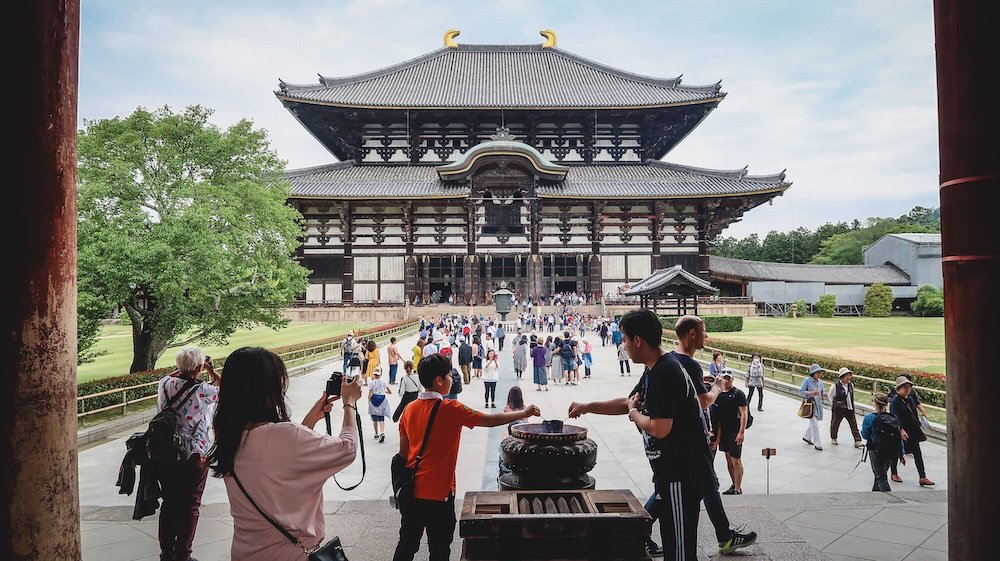
4. Visit Tōdai-ji Temple and the Great Buddha Statue
No visit to Nara is complete without exploring Tōdai-ji (東大寺), home to the majestic Great Buddha (Daibutsu). For an entrance fee of 600 Yen, you’ll step into a world of ancient spirituality and architectural grandeur. The Daibutsuden (Great Buddha Hall) is the largest wooden building in the world, housing a colossal bronze Buddha statue that stands over 15 meters tall. As you stand before this awe-inspiring figure, the sheer scale and craftsmanship leave a lasting impression. The temple grounds also feature beautiful gardens, smaller shrines, and a chance to experience the tranquility of Buddhist practices.
- UNESCO World Heritage Site: Immerse yourself in a place of global cultural significance.
- Architectural wonder: Marvel at the engineering feat of the massive wooden hall.
- Spiritual ambiance: Feel the serene atmosphere that envelops the temple.
Tip: Don’t miss the “Buddha’s Nostril”—a pillar with a hole said to grant enlightenment to those who can squeeze through it. It’s a fun challenge, especially for kids!

5. Savor Green Tea and Sakura Japanese Ice Cream
Treat your taste buds to the delightful flavors of Japan with green tea (matcha) and sakura (cherry blossom) ice cream. Available at numerous stalls and cafes around Nara Park, these creamy delights offer a refreshing break from sightseeing. The matcha ice cream boasts a rich, slightly bitter taste that’s quintessentially Japanese, while the sakura flavor provides a subtle sweetness reminiscent of cherry blossoms. Enjoying these ice creams not only satisfies your sweet tooth but also connects you with Japan’s seasonal traditions.
- Authentic flavors: Experience classic Japanese tastes in frozen form.
- Instagram-worthy: The vibrant colors make for great photos.
- Perfect refresher: Cool down on warm days while exploring.
Tip: Opt for a swirl of both flavors to enjoy a harmonious blend of matcha and sakura in one cone or cup.
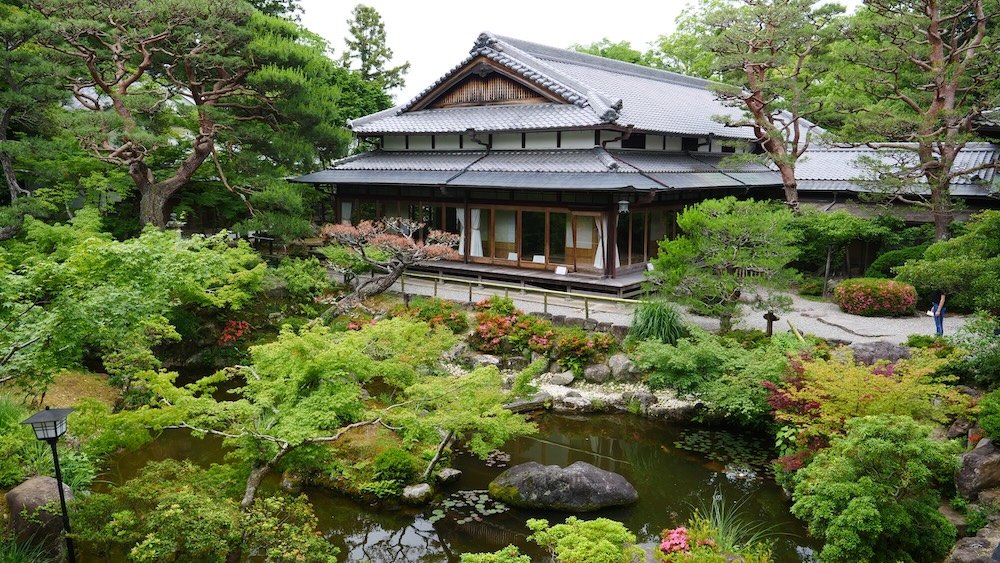
6. Stroll Through Yoshiki-en Garden for Free
Escape into tranquility at Yoshiki-en Garden (吉城園), a hidden gem offering free admission to foreign visitors. This traditional Japanese garden features three distinct areas: a pond garden, a moss garden, and a tea ceremony flower garden. As you wander the winding paths, you’ll encounter meticulously landscaped scenes that change with the seasons. The peaceful atmosphere provides a perfect respite from the busier tourist spots. It’s an ideal place for photography, reflection, or simply appreciating the artistry of Japanese horticulture.
- Cost-free exploration: Enjoy the beauty without spending a yen.
- Seasonal beauty: Witness cherry blossoms, autumn leaves, or lush greenery depending on when you visit.
- Cultural insight: Gain appreciation for traditional garden design and aesthetics.
Tip: Bring a notebook or sketchpad if you’re artistically inclined—the serene setting is inspiring for drawing or writing.
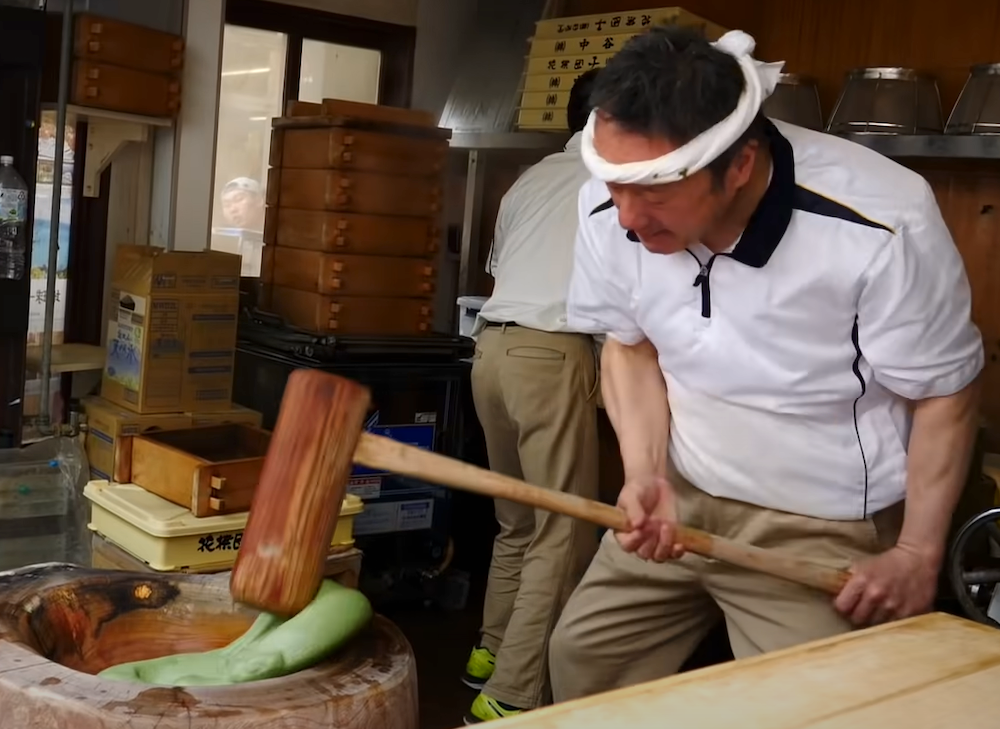
7. Watch a Mochi Pounding Demonstration and Taste Fresh Mochi
Experience the dynamic art of mochi-making at Nakatanidou, a famous mochi shop near Nara Park. Known for their speed, the staff pound rice into mochi with remarkable rhythm and precision, drawing crowds to watch the spectacle. After the energetic demonstration, you can purchase a freshly made mochi for 130 Yen each. The mochi is soft, chewy, and often filled with sweet red bean paste, offering a delightful taste of traditional Japanese confectionery. Watching and tasting here is not just a snack break—it’s a cultural experience.
- Live performance: Witness the impressive “mochitsuki” process firsthand.
- Delicious reward: Enjoy one of the freshest mochi you’ll ever taste.
- Cultural tradition: Learn about a practice integral to Japanese celebrations.
Tip: Arrive early or be prepared to wait, as this spot is popular and lines can form quickly, especially on weekends.
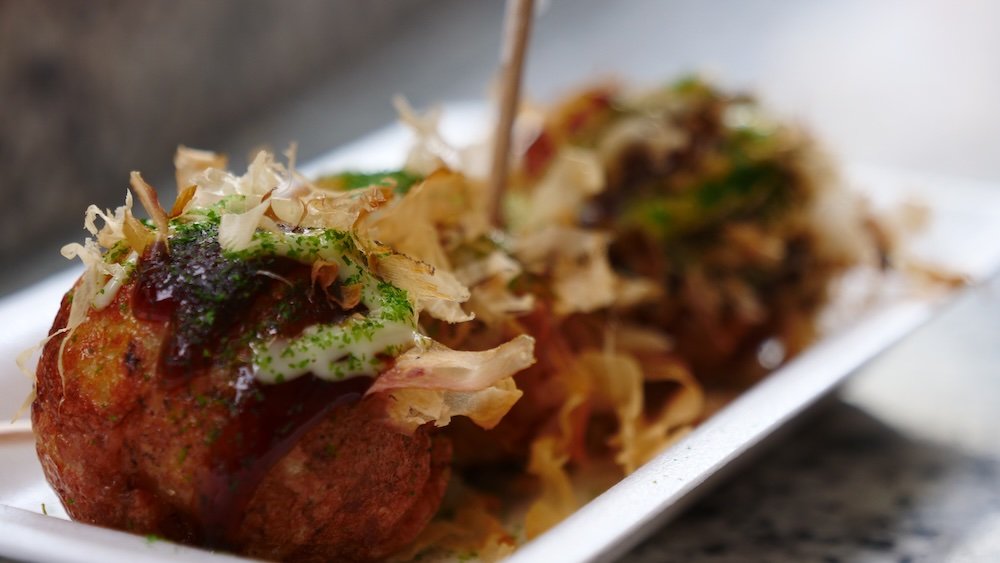
8. Indulge in Takoyaki (Octopus Balls)
Dive into local street food by trying Takoyaki (たこ焼き), a beloved Japanese snack available for around 130 Yen each. These savory balls are made from a wheat flour-based batter, filled with diced octopus, tempura scraps, pickled ginger, and green onions. Cooked on a special molded pan, they come out crispy on the outside and gooey on the inside. Topped with Takoyaki sauce, mayonnaise, and bonito flakes, they offer a burst of flavors and textures. Watching the vendors expertly flip the Takoyaki adds to the enjoyment.
- Culinary delight: Experience a staple of Japanese street food culture.
- Interactive experience: Enjoy watching the preparation process.
- Satisfying snack: Perfect for refueling during your explorations.
Tip: Allow them to cool slightly before eating, as they’re served piping hot and can easily burn your mouth if you’re not careful!

9. Enjoy Fresh Salmon and Mackerel Sushi
Satisfy your sushi cravings with fresh salmon and mackerel sushi at local eateries in Nara, typically priced around 1,300 Yen. Nara offers a range of sushi restaurants, from cozy traditional spots to modern establishments. Mackerel sushi, or “sabazushi,” is a regional specialty, often prepared with vinegared rice and wrapped in preserved persimmon leaves for a unique flavor. The freshness of the fish and the skillful preparation make for an unforgettable dining experience. Pair your sushi with some warm sake or green tea for a complete meal.
- Local flavors: Taste Nara’s take on classic sushi dishes.
- Quality ingredients: Enjoy high-grade fish selected daily.
- Atmospheric dining: Many restaurants offer a traditional ambiance.
Tip: Visit during lunchtime, when many restaurants offer set menus or specials that provide excellent value for money.
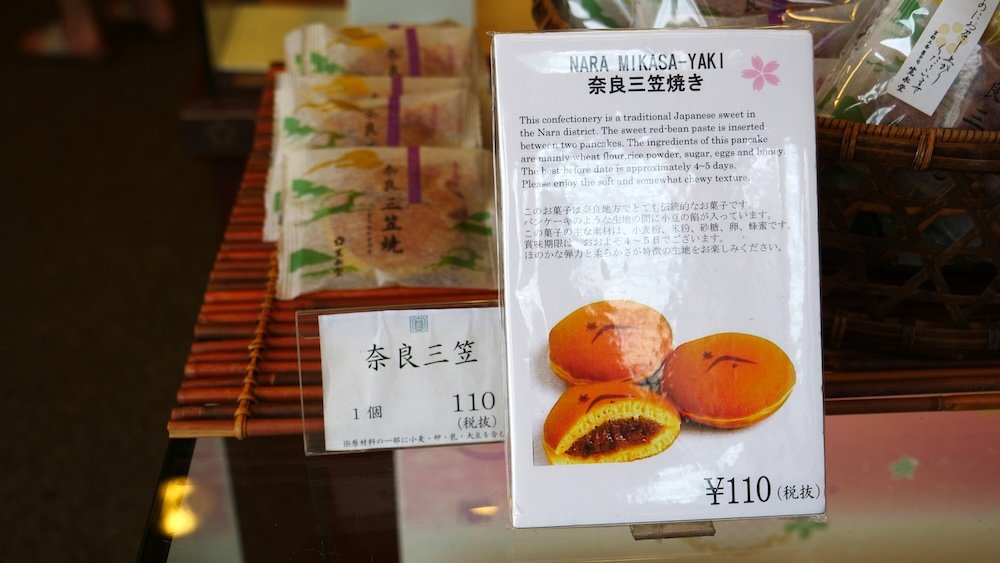
10. Try Nara Dorayaki (Red Bean Pancakes)
Conclude your culinary journey with Nara Dorayaki (どら焼き), delightful red bean-filled pancakes priced at approximately 118 Yen each. These treats consist of two small pancake-like layers made from castella cake, sandwiching a sweet azuki red bean paste. Soft, fluffy, and subtly sweet, Dorayaki are a popular snack enjoyed by people of all ages. Some shops in Nara offer unique variations, such as green tea-flavored pancakes or fillings like custard and chestnut. They’re perfect for a quick snack on the go or as a souvenir to share with friends back home.
- Traditional sweet: Experience a classic Japanese confection.
- Variety of options: Explore different flavors and fillings.
- Great gift idea: Packaged versions are available for souvenirs.
Tip: Enjoy your Dorayaki with a cup of green tea for a harmonious blend of flavors that complements the sweetness.
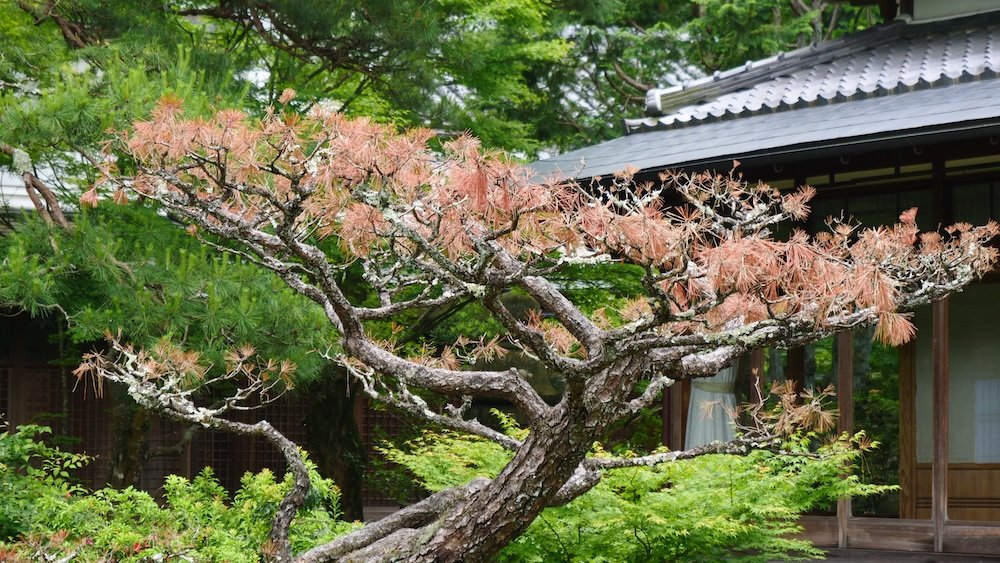
Tours For Visitors To Nara, Japan
Let’s delve into some of the top tours that will make your Nara experience unforgettable.
1. Nara Historical Walking Tour
Step back in time with a Nara Historical Walking Tour that takes you through the city’s most iconic landmarks. Led by knowledgeable guides, you’ll visit UNESCO World Heritage Sites like Tōdai-ji Temple and Kasuga Taisha Shrine. As you stroll through ancient paths, the guide will share intriguing stories and facts about Nara’s significance in Japanese history. The tour often includes a visit to Nara Park, where you’ll meet the friendly deer and learn about their sacred status. It’s an enriching experience that blends education with the joy of exploration.
- Expert guidance: Learn from locals who know the city’s history inside out.
- Cultural immersion: Understand the traditions and rituals of ancient Japan.
- Scenic routes: Enjoy picturesque views as you walk between sites.
Tip: Wear comfortable walking shoes and bring a bottle of water, as the tour covers several kilometers over a few hours.
2. Nara Deer and Temple Tour with Kimono Experience
Embrace Japanese culture fully by joining a tour that combines temple visits with a traditional kimono experience. Start by dressing in a beautiful kimono or yukata, adding an authentic touch to your journey. You’ll then explore Nara Park, feeding the bowing deer and capturing memorable photos. The tour continues to Tōdai-ji Temple, where the grandeur of the Great Buddha awaits. Guides provide insights into Buddhist practices and the historical significance of the temple. This tour is not just about sightseeing; it’s about feeling like a part of the culture.
- Kimono rental included: Choose from a variety of designs and colors.
- Professional photography: Some tours offer photography services to capture your experience.
- Cultural insights: Learn proper kimono etiquette and temple manners.
Tip: Book your tour in advance, especially during peak seasons, to ensure availability of kimono rentals in your preferred style.
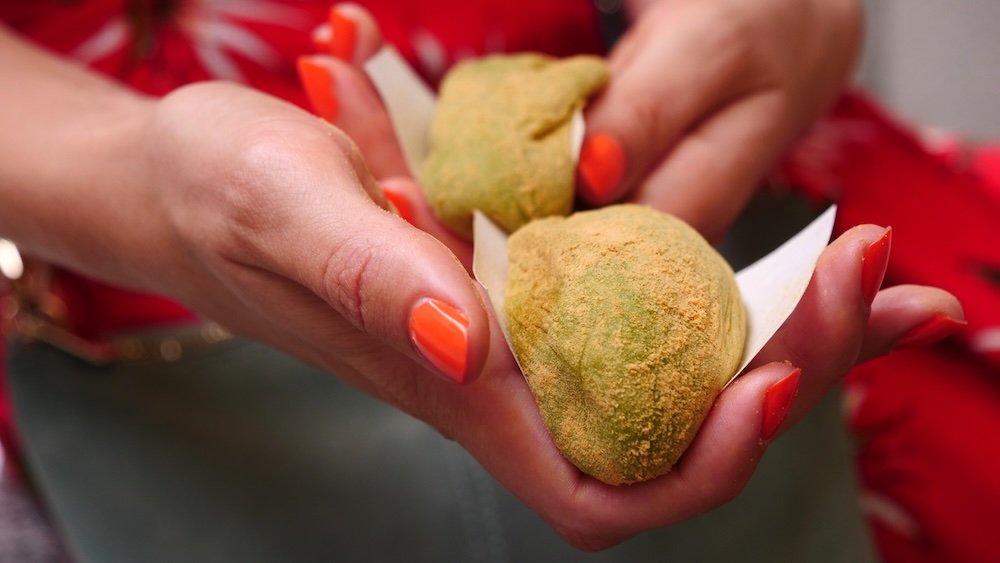
3. Nara Culinary Walking Tour
For food enthusiasts, a Nara Culinary Walking Tour is the perfect way to taste the city’s local flavors. Guided by a food expert, you’ll visit hidden gems and popular eateries along Komachi Street and beyond. Sample a variety of dishes such as mochi, Takoyaki, and the unique “deer poop” chocolate snacks. The tour also includes stops at traditional markets where you can learn about regional ingredients and cooking methods. It’s not just about eating; it’s about understanding the stories behind each dish.
- Diverse tastings: Try a wide range of local specialties and street foods.
- Insider knowledge: Discover spots favored by locals rather than tourists.
- Cultural exchange: Learn about the history and traditions tied to Nara’s cuisine.
Tip: Come hungry and be open to trying new things—you might discover a new favorite food!
4. Nara Cycling Tour
Experience the beauty of Nara’s landscapes with a guided cycling tour. Pedal through serene parks, along scenic rivers, and past historic sites, all while enjoying the fresh air. The tour covers more ground than walking tours, allowing you to see more in less time. Knowledgeable guides ensure a safe journey, taking you on bike-friendly routes and sharing fascinating information along the way. It’s an active and eco-friendly way to explore the city.
- Bike rental included: High-quality bicycles and helmets provided.
- Flexible pacing: Suitable for various fitness levels with regular rest stops.
- Off-the-beaten-path: Access areas that are less crowded and more secluded.
Tip: Wear sunscreen and sunglasses, and consider bringing a small backpack for personal items and water.
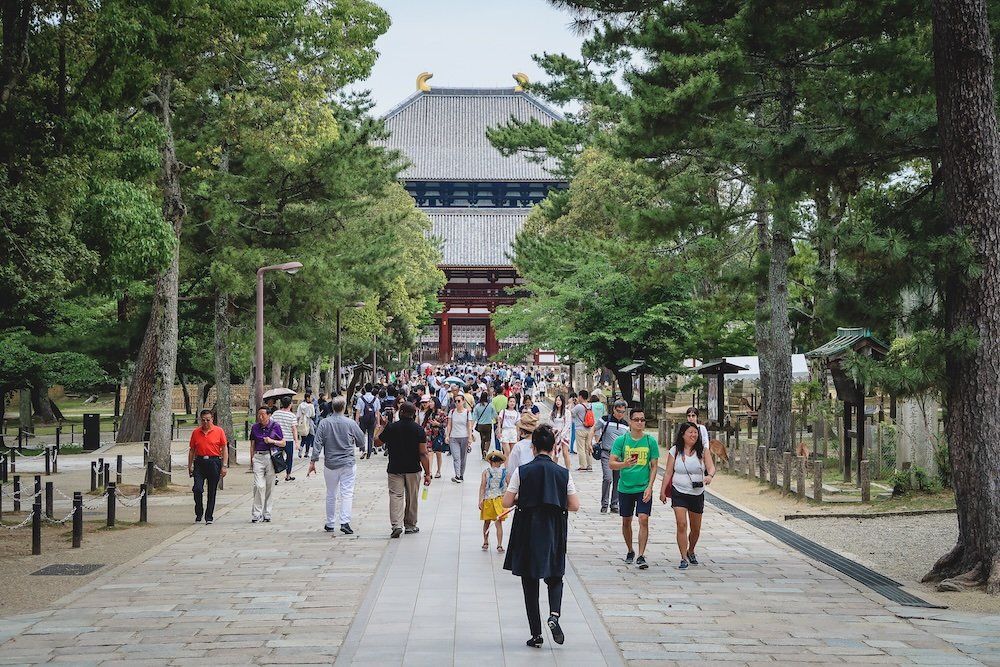
Nara Accommodations Guide: Hotels, Guesthouses and Hostels
Finding the perfect place to rest your head in Nara can greatly enhance your travel experience. Let’s explore some of the best options to make your stay as comfortable and memorable as possible
Hotels: Comfort and Convenience in Nara
If you’re looking for comfort and convenience, Nara’s hotels are an excellent choice. Many are strategically located near major attractions like Nara Park and Tōdai-ji Temple, making it easy to explore the city. These hotels often boast spacious rooms, modern facilities, and exceptional service. You’ll find amenities such as on-site restaurants serving delicious local cuisine, fitness centers, and even spas for relaxation. Staying in a hotel provides a hassle-free experience, allowing you to focus on enjoying your trip. With options ranging from international chains to boutique establishments, there’s a hotel to fit every preference and budget.
- Prime locations close to tourist spots and public transportation.
- High-quality amenities, including Wi-Fi, room service, and concierge assistance.
- English-speaking staff to help with reservations and local recommendations.
Tip: Book your hotel well in advance, especially during peak seasons like cherry blossom time, to secure the best rates and availability.
Guesthouses: Authentic Japanese Hospitality
For a more intimate and culturally immersive experience, consider staying in a traditional Japanese guesthouse. These accommodations, often family-run, offer a glimpse into local life. You’ll sleep on futons laid out on tatami mats and might even enjoy home-cooked meals. The hosts are usually very welcoming and can provide insider tips on hidden gems around Nara. Staying in a guesthouse allows you to connect with the community and experience Japanese hospitality firsthand. It’s an excellent option for those looking to dive deeper into the culture.
- Traditional settings with tatami rooms and Japanese decor.
- Personalized attention from hosts eager to share their culture.
- Homemade meals, offering authentic local flavors.
Tip: Learn a few basic Japanese phrases to enhance your interactions and show appreciation for your hosts’ efforts.
Hostels: Budget-Friendly and Social
Traveling on a budget doesn’t mean you have to sacrifice comfort or convenience in Nara. Hostels provide affordable accommodations with the added benefit of a social atmosphere. Many hostels offer both dormitory-style rooms and private rooms, catering to solo travelers and groups alike. Common areas like lounges and kitchens encourage guests to mingle, share stories, and maybe even plan outings together. Hostels are often located near public transportation, making it easy to explore the city. Plus, the staff are usually knowledgeable about budget-friendly activities and dining options.
- Economical prices, freeing up your budget for experiences and souvenirs.
- Opportunities to meet fellow travelers from around the world.
- Amenities like free Wi-Fi, laundry facilities, and sometimes bicycle rentals.
Tip: Bring a padlock for locker storage and consider earplugs and an eye mask if you’re staying in a shared dormitory.

Nara Transportation Guide
Whether you’re arriving from nearby cities or exploring within Nara itself, there are plenty of transportation options to suit your itinerary. From efficient trains to leisurely bike rides, let’s dive into the best ways to explore this historic city.
Getting to Nara: Your Journey Begins
By Train: The Kintetsu Line
One of the most convenient ways to reach Nara is by taking the Kintetsu Line. If you’re coming from Osaka’s Nipponbashi Station, the train ride costs just 560 Yen per person. The journey takes approximately 40 minutes, whisking you through scenic landscapes and delivering you right into the heart of Nara. Trains are frequent and comfortable, making it a hassle-free option for travelers. Plus, the Kintetsu Nara Station is closer to major attractions like Nara Park and Tōdai-ji Temple compared to the JR Nara Station.
- Affordable fare: Only 560 Yen for a quick and comfortable trip.
- Frequent departures: Trains run every few minutes, so you won’t wait long.
- Central arrival point: Arrive close to key sights, saving you time.
Tip: Consider purchasing a Kintetsu Rail Pass if you plan to explore other areas served by Kintetsu trains—it offers unlimited rides for a set period.
By Train: The JR Yamatoji Line
Alternatively, you can take the JR Yamatoji Line from Osaka Station to Nara. The journey costs around 800 Yen and takes about 50 minutes. This option is convenient if you hold a Japan Rail Pass, as it covers JR trains. The JR Nara Station is a bit further from the main attractions, but local buses and taxis are readily available to get you where you want to go. The trains are clean, punctual, and offer a comfortable ride, making it a reliable choice.
- JR Pass friendly: Great for travelers using the Japan Rail Pass.
- Comfortable journey: Enjoy spacious seating and air-conditioned cars.
- Access to other JR lines: Easy transfers if you’re coming from other regions.
Tip: Plan your route based on your accommodation’s location to decide whether Kintetsu or JR lines are more convenient for you.
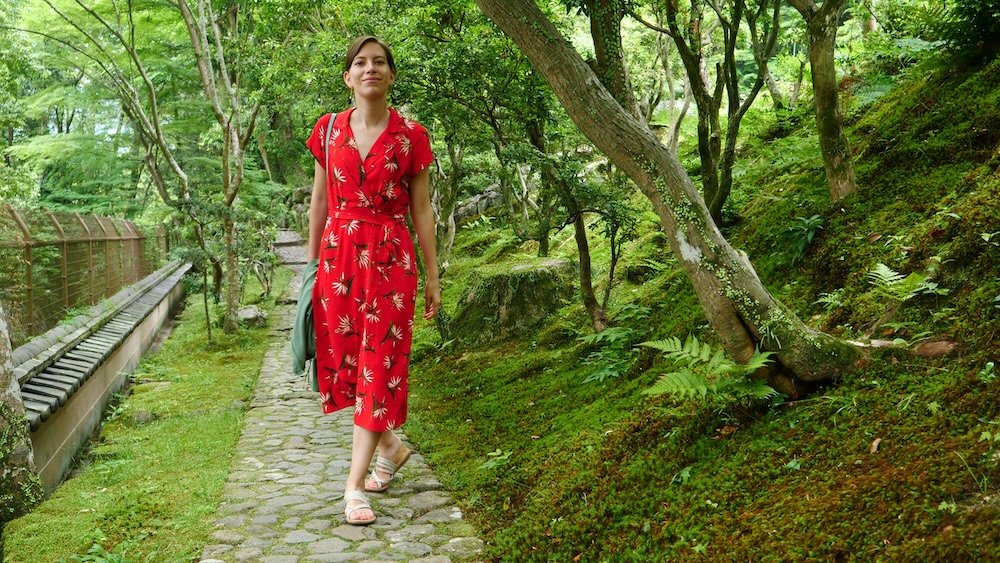
Getting Around Nara: Exploring the City
On Foot: Embrace the Walkability
Nara is a highly walkable city, with many of its main attractions located within a reasonable distance from each other. Strolling through the city allows you to soak up the atmosphere, discover hidden gems, and interact with the friendly locals and deer. The paths between sites like Nara Park, Tōdai-ji Temple, and Kōfuku-ji Temple are scenic and well-maintained. Walking gives you the freedom to explore at your own pace and truly immerse yourself in the surroundings.
- Cost-effective: No transportation fees—just put on your walking shoes.
- Discover more: Chance encounters with lesser-known spots.
- Healthy option: Enjoy fresh air and get some exercise.
Tip: Wear comfortable shoes and carry a bottle of water, especially during warmer months to stay hydrated.
By Bus: Nara City Loop Bus
For those who prefer not to walk long distances, the Nara City Loop Bus is a fantastic option. These buses run in a circular route around the main tourist spots, making it easy to hop on and off as you please. The buses are frequent and have announcements in multiple languages. A single ride costs around 210 Yen, or you can purchase a one-day pass for unlimited rides at 500 Yen. This is a convenient way to cover more ground without tiring yourself out.
- Convenient stops: Buses stop near major attractions.
- Affordable passes: Unlimited rides make sightseeing efficient.
- Multilingual support: Easy navigation for international visitors.
Tip: Grab a bus route map from the tourist information center to plan your stops and make the most of your pass.
By Bicycle: Pedal Through History
Cycling is a delightful way to explore Nara, offering flexibility and fun. Numerous rental shops near the train stations offer bicycles for around 1,000 Yen per day. The city is relatively flat, making it easy even for casual cyclists. Bike paths and quiet streets connect many of the key sites, and cycling lets you cover more distance than walking while still enjoying the open air. It’s an eco-friendly option that adds a touch of adventure to your sightseeing.
- Freedom to explore: Go where buses can’t take you.
- Time-efficient: See more attractions in less time.
- Enjoyable experience: Combine exercise with exploration.
Tip: Always lock your bike when leaving it unattended, and be mindful of pedestrian areas where cycling might be restricted.
By Taxi: Convenience at a Price
Taxis are readily available in Nara and can be a convenient option, especially if you’re short on time or traveling in a group. They’re clean, safe, and drivers are generally courteous. Fares can add up, though, so it’s not the most budget-friendly option. Taxis can be hailed on the street, found at taxi stands near stations, or booked through apps. They are useful for reaching destinations not well-served by public transport.
- Direct travel: Door-to-door service saves time.
- Comfortable ride: Air-conditioned and spacious vehicles.
- English support: Some taxis cater to tourists with English-speaking drivers.
Tip: Have your destination written in Japanese or use a map app, as not all drivers speak English fluently.
By Rickshaw: A Unique Experience
For a memorable and traditional mode of transport, consider hiring a rickshaw. While more of a novelty, rickshaws offer guided tours with local insights as you’re pulled along in a comfortable carriage. The drivers are knowledgeable and often share stories and historical facts. It’s a bit pricey, but the experience is unique and photo-worthy. Routes and prices vary, so discuss your preferences with the driver beforehand.
- Personalized tour: Customized routes and commentary.
- Cultural experience: Traditional mode of transportation.
- Great for photos: Capture picturesque moments along the way.
Tip: Negotiate the route and price before starting your ride to ensure it fits your interests and budget.
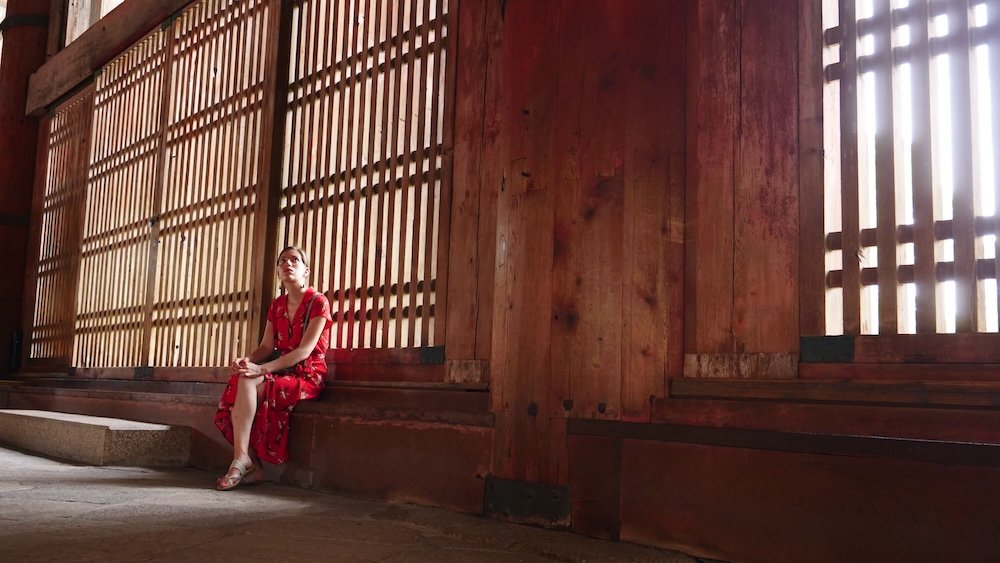
Nara Travel Guide: Final Thoughts
Envisioning Your Nara Adventure
As you plan your journey through Japan, Nara stands out as worthy of your consideration. Imagine strolling through ancient temples, feeding gentle deer that bow in greeting, and savoring delectable local cuisine. The city’s harmonious blend of tradition and modernity offers an experience that’s both enlightening and enjoyable. Whether you’re a history enthusiast, a foodie, or simply seeking a peaceful retreat, Nara has something special to offer. It’s not just a place to visit—it’s a place to feel and remember.
- Rich cultural heritage: Explore UNESCO World Heritage Sites and ancient temples.
- Unique wildlife interaction: Engage with the friendly deer of Nara Park.
- Culinary delights: Indulge in local specialties and street food.
Tip: Allocate at least a full day to explore Nara thoroughly—there’s so much to see and do that you won’t want to rush your visit.
